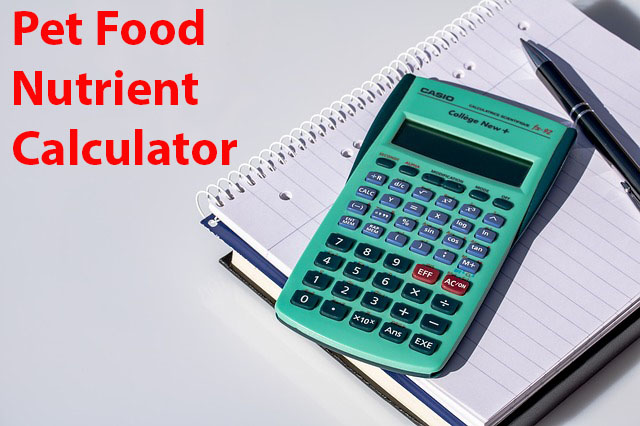Decoding Pet Food Nutrient Labels: A Comprehensive Guide
Understanding and comparing the nutrient levels in different pet foods can be a daunting task for many pet owners. Often, individuals rely on the labels or information from manufacturers’ websites to assess nutrient levels. However, the process of comparing these numbers involves several critical factors that are frequently overlooked.
The Challenge of Nutrient Measurements
When examining pet food labels, it’s important to note that the nutrient amounts listed are commonly expressed in various units such as percentages, milligrams per kilogram (mg/kg), parts per million (ppm), and occasionally International Units per kilogram (IU/kg). Typically, these values are presented on an “as fed” basis, which refers to the food in its packaged state.
This “as fed” measurement complicates direct comparisons between different pet foods, as it does not account for variations in water content or caloric density across products.
Case Study: Comparing Calcium in Dry Dog Foods
To illustrate this challenge, consider a comparison of two dry dog foods, both of which are listed as containing 1.12% calcium. Although the percentage of calcium appears identical, the caloric content differs significantly. For example:
| Diet | Calories per Cup | % Calcium on Label | Mg of Calcium per Cup | Cups Eaten per Day | Total Mg Calcium Eaten per Day |
|---|---|---|---|---|---|
| Diet A | 250 | 1.12% | 430 | 2 | 860 |
| Diet B | 500 | 1.12% | 296 | 1 | 296 |
If your dog requires 500 calories daily to maintain optimal weight, the comparison reveals that Diet A provides significantly more calcium (860 mg) than Diet B (296 mg) due to the varying caloric densities and feeding amounts.
Examining Fat Content in Cat Foods
Let’s take a closer look at two cat foods—one dry and one canned—to further explore these comparisons. Assume your veterinarian has recommended a lower-fat diet for your cat. Here are the initial numbers:
| Type of Diet | % Fat on Label | % Moisture | % Fat (Dry Matter) | Fat g/100 kcal Food |
|---|---|---|---|---|
| Diet A (Dry) | 12% | 7% | 12.8% | 3.5 |
| Diet B (Canned) | 6% | 78% | 26.3% | 6.3 |
While Diet B appears lower in fat at first glance, a deeper analysis reveals that it actually contains nearly twice the fat content of Diet A when accounting for water and calories. Canned foods typically contain approximately 75% water, significantly affecting the calculated fat percentages. This underscores the importance of not relying solely on the label percentages.
How to Accurately Compare Nutrients
The key to making effective comparisons among pet foods is to convert nutrient amounts into the same units based on caloric content, specifically units per 100 calories (kcal). While this calculation may involve some arithmetic, tools such as nutrient calculators can simplify the process.
Steps to Use a Nutrient Calculator
- Determine the caloric value of the food or treat in kcal/kg, which can be found on the label or the manufacturer’s website.
- Gather the nutrient amounts you wish to compare—this could include sodium, fat, copper, phosphorus, etc., listed on an “as fed” basis.
- Contact the manufacturer if the information is unclear, ensuring you request the “average” or “typical” analysis rather than the “guaranteed” analysis.
If a manufacturer is unable or unwilling to provide this information, it may signal concerns about the quality of their pet food.
Utilizing Nutrient Comparators
To assist you in making informed decisions, consider using nutrient comparison calculators available online. These tools allow you to convert nutrient measurements to align with caloric values, thus enabling precise comparisons:
Nutrient Converter: This handy calculator transforms nutrients expressed in percentages, mg/kg, or IU/kg into comparable units per 100 kcal.
In summary, while comparing pet food nutrient levels can initially seem straightforward, it requires careful consideration of various factors to ensure accurate evaluations. By leveraging available tools and thorough inquiries with manufacturers, you can confidently select the best dietary options for your beloved pets.











